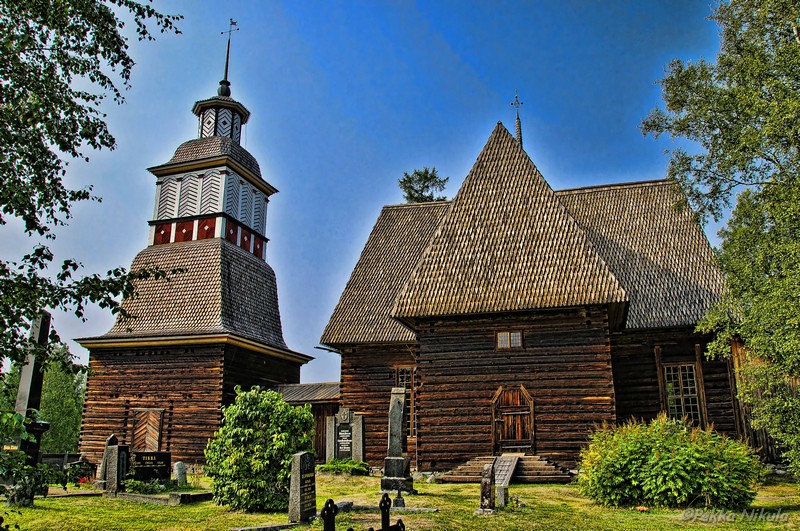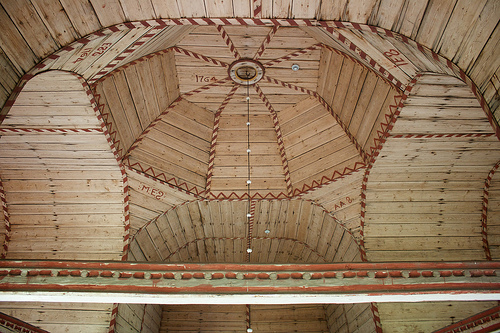Petäjävesi (Finnish for “Pine Water”). Built by Central Finland’s land-owning peasants in 1763-65 with the belfry and passageway connecting the two in 1821. It is completely made of unpainted pine – logs, floor (cut from the wall logs of a chapel that stood on the same spot), interior walls and pews. It remains almost unchanged since construction. The ceiling is a high barrel vaulted ceiling with red/white candy stripe edging (described as imitations of the medieval egg-and-dart pattern, the only decorative element to the church). The blue pulpit has small white carvings of Jesus, the 4 evangelists and numerous angels and is supported by St Christopher, the patron saint of all travelers and also known as “the Christ bearer”. The paintings in the apse are of the Holy Communion, Moses and Martin Luther. The hatch in the floor leads to a wine cellar.
The wonderful three-story belfry has a blue sky and four-pointed star ceiling that can be opened up to for lifting up the bells. The outside has a white herring-bone design. Both have decorative wood shingles with the church a shingled onion dome. In it is the bench of shame (an original object) and has rooms in the corners that served as tithe room, weapons room, mortuary and stairs to access the top.




The service usually lasted 4 hours and included the local news. In the 1820’s seating order was introduced with numbers painted on the ends of the pews. Servants sat in the 3 balconies, women on the left and men on the right. The ‘church waker’ used a staff to wake up parishioners who had fallen asleep during the service.
The church was abandoned in 1879 when a new church was built on the opposite side of the bay, but his was not pulled down and the bells stayed in the church. It was renovated in the 1950s. It has never had heating. It was UNESCO World Heritage Site listed in 1994. The graveyard has had 9,100 buried in it since 1729 with 131 stones remaining, the oldest wood and dating to 1837. The clergy and landowners stones are more elaborate. The plank fence resembles a 19th century log fence.
It still holds services, wedding, christenings and concerts. Private €5, no reduction
The church is about 35kms west of Jyväskylä and I have included it the part of Finland – Northern Ostrobothnia and Eastern (it is listed in both here and Western Finland).